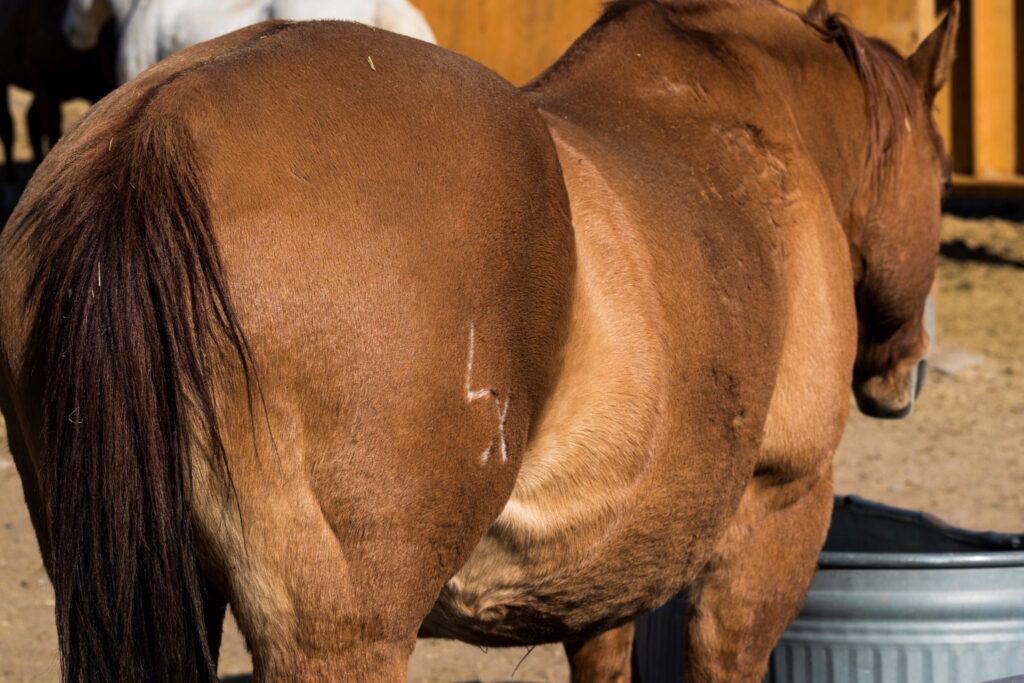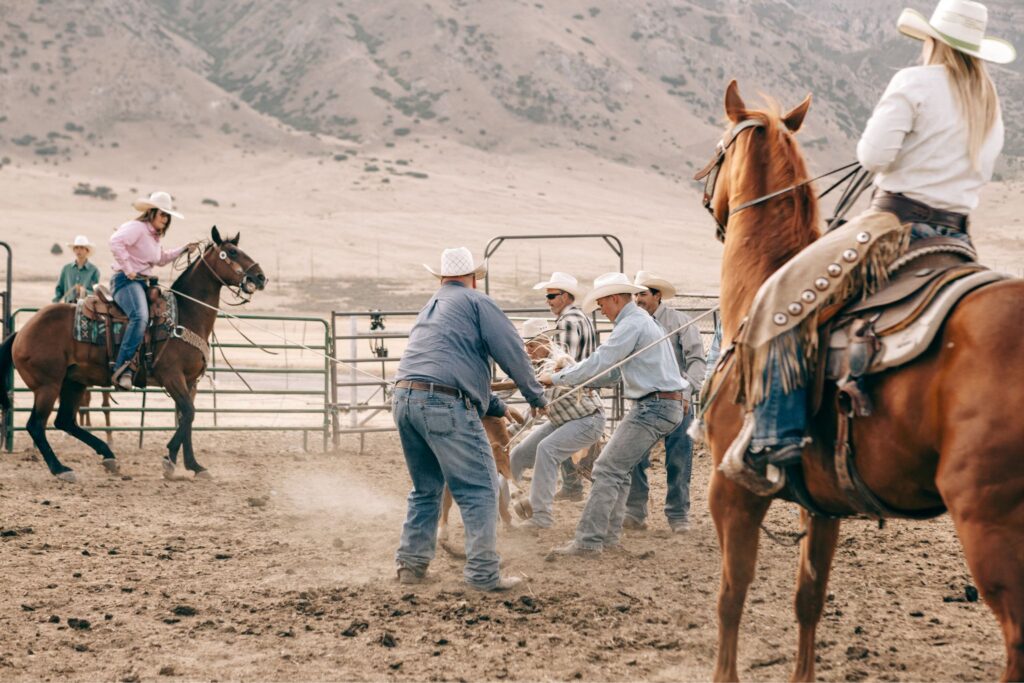Horse News
Member
What to Know About Brand Inspections for Horses
Say you moved from Ohio to Colorado and are planning a trail riding trip a few hours away with friends. You’re asked, “Did you get a brand inspection?” A brand what? Coming from the Midwest, I was clueless about the brand inspection process.
The good news? It’s pretty easy to get up to speed!
A number of Western states require brand inspections whenever you are buying, selling, or transporting livestock. These agencies record livestock brands and conduct inspections to verify ownership. The brand management process helps in cases of missing and stolen livestock.
Branding History
The concept of branding livestock began thousands of years ago—in fact, it dates back to 2700 BC! Spaniards brought branding to the Western hemisphere in the 1500’s, and the first recorded US brand was in Texas in 1832.

Source: Canva
The Why Behind Branding
Brands were created to help quickly and easily determine ownership of livestock. The brand inspection process creates a paperwork trail, which helps determine ownership and deter theft.
We have good news and bad news.
The bad news is that every state in the US manages brand inspections differently, which really complicates things! The good news is rules are fairly similar from state-to-state, and it’s fairly easy to get questions answered.
At a high level, brand inspections are a Western United States thing. If you live on the East Coast, you likely won’t have to worry about them!
Eleven states currently practice some degree of brand inspections. In some states, brand inspections do not apply to equines.
One key point to make is that branding, in itself, is not required.
Regardless, even if your horse doesn’t have a brand, if you live in a brand inspection state, you’ll still need to get an inspection to travel more than 75 miles or across state lines, and to change ownership.
The Who Behind Brand Inspections
Brand inspections apply to livestock. Specific species vary state-by-state, but all brand states require inspections on cattle.
Equines are occasionally exempt. In some states, sheep also require inspections.
The Where: Brand Inspection States
Eleven states require brand inspections.
Eight of the eleven states require inspections for horses. Those states include:
- Colorado: Bovines & equines included.
- Idaho: Bovines & equines included; Sheep are exempt.
- Montana: Bovines & equines included; Bison transportation permits are required but inspections are not.
- Nevada: Bovines & equines included.
- North Dakota: Bovines & equines included.
- South Dakota: Bovines, horses, & mules are included. Donkeys appear to be exempt!
- Washington: Bovines & equines included for transportation. Change of ownership inspections are not required, but are recommended for horses.
- Wyoming: Bovines & equines included, as are sheep.
There are three states where horses are exempt from the brand inspection process:
- California: Equines are exempt.
- Nebraska: Equines are exempt.
- Utah: Horse inspection is recommended but not required.
When You Need a Brand Inspection
In all states requiring equine brand inspections, you’ll need an inspection when ownership changes hands (so if you’re buying or selling an equine within a brand inspection state).
Requirements may vary by state, so always do some research on where you live. Most states require brand inspections if you’re traveling more than 75 miles away, or across state borders.

Source: Canva
For example:
If you live in Colorado, and you buy a horse from a seller who lives in Colorado, you definitely need to get a brand inspection for the change of ownership. The seller must be physically present for the inspection.
If you live in Wyoming, and you buy a mule from a seller living in Michigan, you won’t need a brand inspection to cross state lines and bring the mule into Colorado, since Michigan doesn’t have brand inspection rules.
But, you will need a brand inspection to transport that mule in Colorado after taking possession. In fact, the sooner the better, as it will help you establish ownership of the animal.
If you live in Montana and plan to haul your horse to Idaho to a show, you’ll need a brand inspection (and a negative Coggins test!).
What to Expect When you Get a Brand Inspection
In Colorado, the process for getting a brand inspection is simple.
- First, figure out who you need to contact to schedule your brand inspection. I had to think twice for mine, as I live in one county but keep my donkeys in another. For my case, I needed to contact the brand inspector for the county in which the animals are located.
- Contact the appropriate brand inspector to set up an appointment. You’ll definitely need to give a minimum of 24 hour’s notice; a week would be better. Plan to have the brand inspection conducted on a weekday, during business hours. The owner must be present.
- Pack your paperwork. This could include your Certificate of Title, registration papers, a Bill of Sale, and the previous brand inspection showing transfer of ownership to you.
- Be on time and ready. You’ll need to have your horse haltered and ready to pose for a few pictures. The inspector will photograph each side and the view from the front—to capture any facial markings.
- Pay up! Colorado accepts cash or a check.
- Make sure to grab a copy of your temporary brand inspection paperwork until your permanent card arrives in the mail.
- Ensure your permanent travel card arrives before your temporary paperwork expires.
Be sure to have the following info available for your brand inspection:
- Equine Name
- Breed
- Date of Birth (Year is sufficient)
- Weight
- Gender
- Color
- Specific Markings
- Identifying marks such as cuts, scars, non-recognized brands, etc.
- Microchip number (if your horse has one)
Real-life example: I had my brand inspection approximately 1 month ago; my temporary certificate is valid for 2 months. I received the permanent copy after approximately six weeks had passed.
Brand Ownership
Specific brands used on livestock (Think: Bar R, Double S) are tracked at the state level. In Colorado, you must register your brand with the state every five years.

A brand board posted in Canon City, Colorado. Photo Cred: Blue & Moon Burros
There’s a lengthy process to get a new brand. Or, you could buy an existing brand.
Again, using Colorado as an example, you could buy a current brand for anywhere between $2,500 and $25,000.
Brands are published in a Brand Book every five years.
Methods of Branding
There are a few different methods to brand animals. It is most common to see freeze branding in horses. Most horses in the USA are not branded, however.
Branding: Methods
- Fire branding uses a hot iron (like what you’ve seen in Western movies!) to remove the hair, burning a scar into the the skin.
- Electric branding is similar except the iron is heated using electricity instead of hot coals.
- Freeze branding uses chilled iron (with dry ice) to remove hair pigment, leaving white hair behind.
Fun Facts about Brands & Brand Inspections
Colorado has a budget of approximately $4M per year for brand management. This is fully funded by brand fees and doesn’t cost the taxpayers money.
Brand inspections in Nebraska change by county! Not all counties require them.
Three brands established in 1885 in Nevada are still used today.
Montana’s Brand Enforcement Division employs district investigators, which have the authority to arrest people.
BLM brands, seen on wild mustangs and burros, are actually not brands when referring to brand inspections, as the individual’s brand is not registered with the state.
Frequently Asked Questions:
Q: Do I need a brand inspection if my horse doesn’t have a brand?
Yes; if you live in a brand-inspection state, you need a brand inspection to verify ownership. Brand inspectors inspect all animals, regardless of whether or not they have a brand.
Q: Does branding hurt horses?
Yes, hot branding can cause some pain. The horse may flinch or shy away upon contact. Hot branding generally requires contact for only a few seconds.
Freeze branding is thought to be less painful, as the horses don’t react as much to cold temperatures as hot. The freeze brand must be in contact with the skin longer than hot branding to be effective.
Q: How are mustangs branded?
BLM mustangs born in the wild are branded on the left side of the neck using a freeze brand.
Parting Thoughts
While brand inspections may seem like a hassle, they do play an important role in helping define and document ownership of livestock, especially if it is unregistered.
P.S. Enjoy this article? Trot on over to:
- Say Yes to the Horse: 11 Best Breeds for First Time Horse Owners
- 8 Ancient Horse Breeds with Historic Influence
- 7 Amazing Gaited Horse Breeds You Need to Meet
- 5 Best Horse Breeds for Rugged Mountain Hunting
- Western FAQ: What is a Bridle Horse?
Sources:
The Importance of Branding (North Dakota)
Livestock Checkpoints (Wyoming)
The post Brand Inspection Basics: Make Horse Ownership Obvious appeared first on Horse Rookie.
Continue reading...
